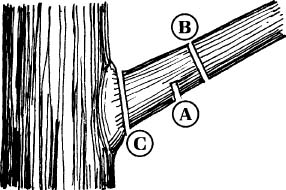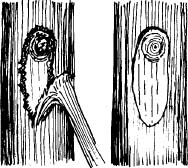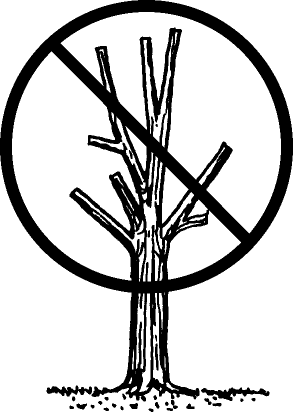Tree First Aid After a Storm
Download the Full Kit
In cooperation with the USDA Forest Service and the International Society of Arboriculture
In the aftermath of a major storm, the initial impulse of property owners is generally along the lines of "let's get this mess cleaned up."
But hasty decisions can often result in removing trees that could have been saved.
Doing the right things after trees have been damaged can make the difference between giving your trees a good chance of survival and losing them
unnecessarily. The Arbor Day Foundation urges home and property owners to follow a few simple rules in administering tree first aid after a storm:
-
Don't try to do it all yourself.
If large limbs are broken or hanging, or if high climbing or overhead chainsaw work is needed, it's a job for a professional arborist.
They have the necessary equipment and knowledge needed, and are generally listed in the telephone directory under "Tree Service."
-
Take safety precautions.
Look up and look down. Be on the alert for downed power lines and dangerous hanging branches that look like they're ready to fall.
Stay away from any downed utility lines, low-voltage telephone, or cable lines and even fence wires can become electrically charged
when there are fallen or broken electrical lines nearby. Don't get under broken limbs that are hanging or caught in other branches
overhead. And, unless you really know how to use one, leave chainsaw work to the professionals.
-
Remove any broken branches still attached to the tree.
Removing the jagged remains of smaller sized broken limbs is one common repair that property owners can make after a storm. If done
properly, it will minimize the risk of decay agents entering the wound. Smaller branches should be pruned at the point where they join
larger ones. Large branches that are broken should be cut back to the trunk or a main limb by an arborist. For smaller branches, follow
the pruning guidelines shown in the illustration so that you make clean cuts in the right places, helping the tree to recover faster
(see Illustration D1).
-
Repair torn bark.
To improve the tree's appearance and eliminate hiding places for insects, carefully use a chisel or sharp knife to smooth the ragged
edges of wounds where bark has been torn away. Try not to expose any more of the cambium (greenish inner bark) than is necessary, as
these fragile layers contain the tree's food and water lifelines between roots and leaves
(see Illustration D2).
-
Resist the urge to overprune.
Don't worry if the tree's appearance isn't perfect. With branches gone, your trees may look unbalanced or naked. You'll be surprised
at how fast they will heal, grow new foliage, and return to their natural beauty.
-
Don't top your trees!
Untrained individuals may urge you to cut back all of the branches, on the mistaken assumption that reducing the length of branches
will help avoid breakage in future storms. While storm damage may not always allow for ideal pruning cuts, professional arborists say
that "topping," cutting main branches back to stubs, is one of the worst things you can do for your trees. Stubs will tend to grow back
a lot of weakly-attached branches that are even more likely to break when a storm strikes. Also, the tree will need all its resources to
recover from the stress of storm damage. Topping the tree will reduce the amount of foliage, on which the tree depends for the food and
nourishment needed for regrowth. A topped tree that has already sustained major storm damage is more likely to die than repair itself.
At best, its recovery will be retarded and it will almost never regain its original shape or beauty
(see Illustration D3).

Illustration d1
Cutline: Because of its weight a branch can tear loose during pruning, stripping the bark and creating jagged edges that
invite insects and disease. That won't happen if you follow these steps:
- Make a partial cut from beneath, at a point several inches away from the trunk.
- Make a second cut from above several inches out from the first cut, to allow the limb to fall safely.
- Complete the job with a final cut just outside the branch collar, the raised area that surrounds the branch where it joins the trunk.

Illustration d2
Cutline:Smoothing the ragged edge of torn bark helps the wound heal faster and eliminates hiding places for insects.

Illustration d3
Cutline: Never cut the main branches of a tree back to stubs. Ugly, weakly attached limbs will often grow back higher than
the original branches and be more likely to break off in a future storm.




